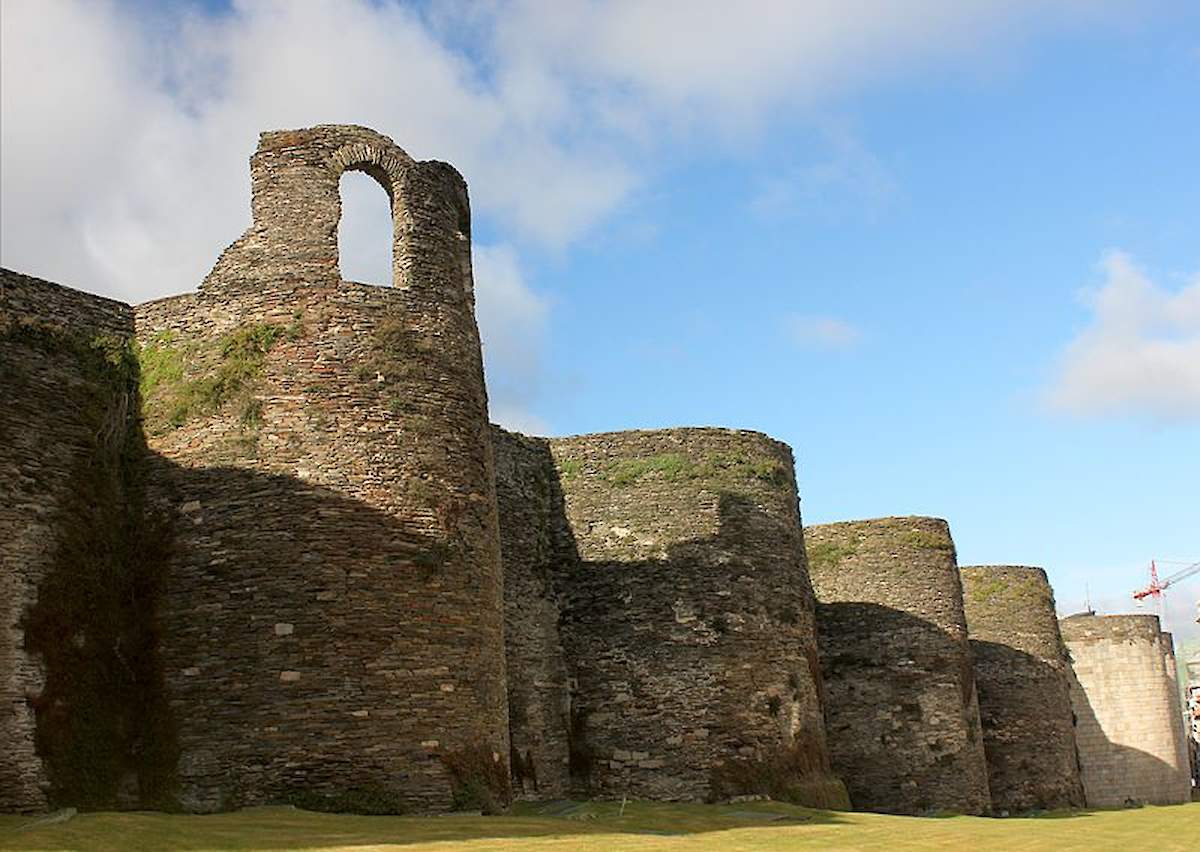
The secrets of Lugo
Lugo is a beautiful city whose main highlight is its perfectly well preserved Roman wall, built in the third Century, and which is designated as a World Heritage Site by UNESCO. Lugo is not directly on the Camino de Santiago, but many of our tours spend one night there with the aid of our support bus to transport us. Pilgrims who wander its streets will discover a city full of charming monuments, delicious gastronomy, and friendly people.
The Roman Wall is two kilometers long and surrounds the entirety of the old city with several towers and gates along its way. From the top of the wall, you can see the roofs and chimneys of the old town, the great towers of the cathedral, as well as the marvelous colors of the countryside. And at night, the centuries old stone streets in the town provide the most romantic walk –you shouldn’t miss it. Other interesting spots are the Cathedral, the old Roman Forum, and the Roman Bridge that crosses the Minho River. You can walk along the river shore to visit the remains of the Roman baths at the Balneario de Lugo.
In Lugo it is typical to eat the caldo gallego, a traditional soup made of cabbage, collard greens, sweet turnip greens, potatoes, white beans, lard, chorizo, and other ingredients (see bottom of the page for a delicious caldo gallego recipe). You can also try the “Lacon con grelos”, a pork shoulder ham with broccoli raab, steamed potatoes and sausage. Both dishes provide energy for pilgrims to walk for hours. The local chefs are very creative in Lugo, and have wisely mixed tradition with new ideas, using local products from land and sea – so don´t be surprised to find innovative tapas imitating these two traditional dishes.
If by chance you visit Lugo in the last weeks of June, you can participate in Arde Lucus, a festival which revives the Roman and Celtic past of the city. You can see military camps with locals dressed up with the clothes and objects of the era, couples celebrating Celtic weddings, an open air banquet, an artisan market, and much more. It is all designed to keep alive traditions from the past.
Historical, monumental, gastronomical… the pilgrim who visits Lugo finds the special magic of the Roman wall, the medieval town and the freshness of the Minho river. You will remember Lugo as a welcoming city with wide open gates where no one is a stranger!
Caldo Gallego
Combination of a recipe by Penelope Casas from her Delicioso cookbook and secrets shared with me by a friend from Galicia. The Caldo Gallego is hearty enough to be a meal, or can be served in small portions as a first course. Serves 4-6.
Ingredients:
- 1 can medium white beans (drained and rinsed)
- 1 tablespoon olive oil
- 2 cloves garlic, minced
- 1 teaspoon sweet paprika
- 7 to 8 cups of water
- 1 smoked ham hock with bone
- 1 pound boneless beef chuck
- 1/2 pound Spanish cured ham, prosciutto, or capicollo, in a thick chunk
- 2 ounces slab bacon or salt pork
- 1 leek, well washed
- 1/2 pound collard green or kale, thick stems trimmed and coarsely chopped (about 4 cups)
- 1/4 pound small new or waxy red potatoes, peeled and broken (do not chop them evenly, but rather with a paring knife break the potato into pieces which improves the consistency of the soup)
- 1/4 pound sweet chorizo (optional)
- Salt
Add the ham hock, beef chuck and salt pork to the 7 to 8 cups of water and keep at a slow rolling boil for 1 1/2 to 2 hours. Add water as necessary to maintain the level in the pot.
Separately, in a small skillet, heat the oil and garlic and saute one or two minutes (the garlic should not color). Turn off the flame and add the paprika. Stir in a tablespoon or two of water. Set aside.
Once the ham hock broth is ready, add the beans, cured ham, leek, potato, chorizo, greens and the garlic mixture from the skillet. Cook approximately 30 minutes or until the potatoes are done.
Remove and cut up the beef, ham, leek, and chorizo and return to the pot. Discard the bone and the salt pork. Cover and let sit for 10 minutes before serving.